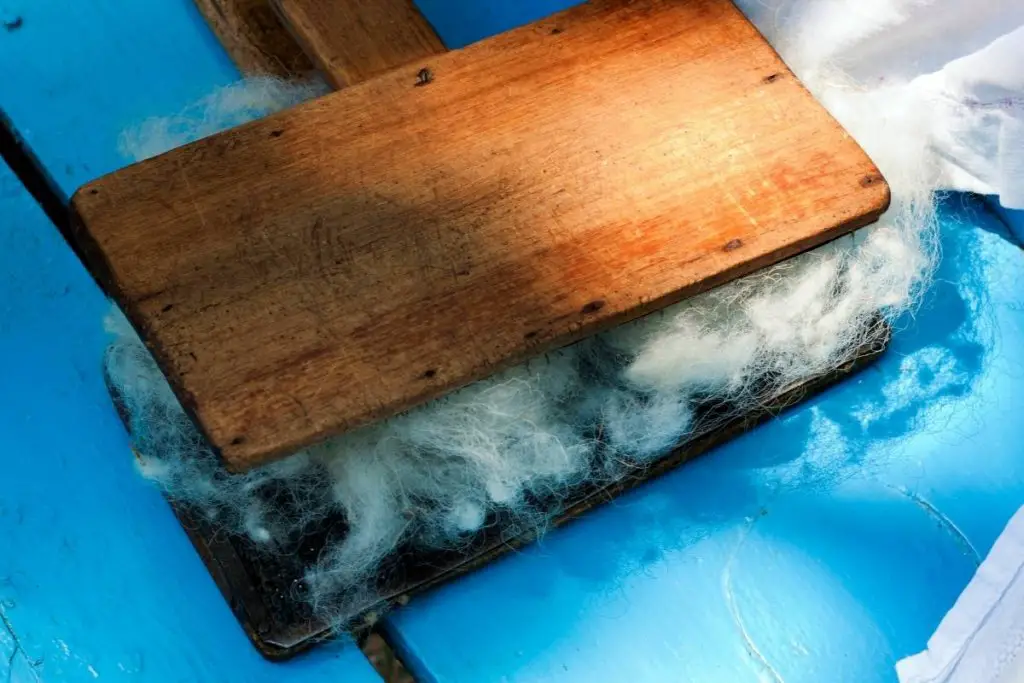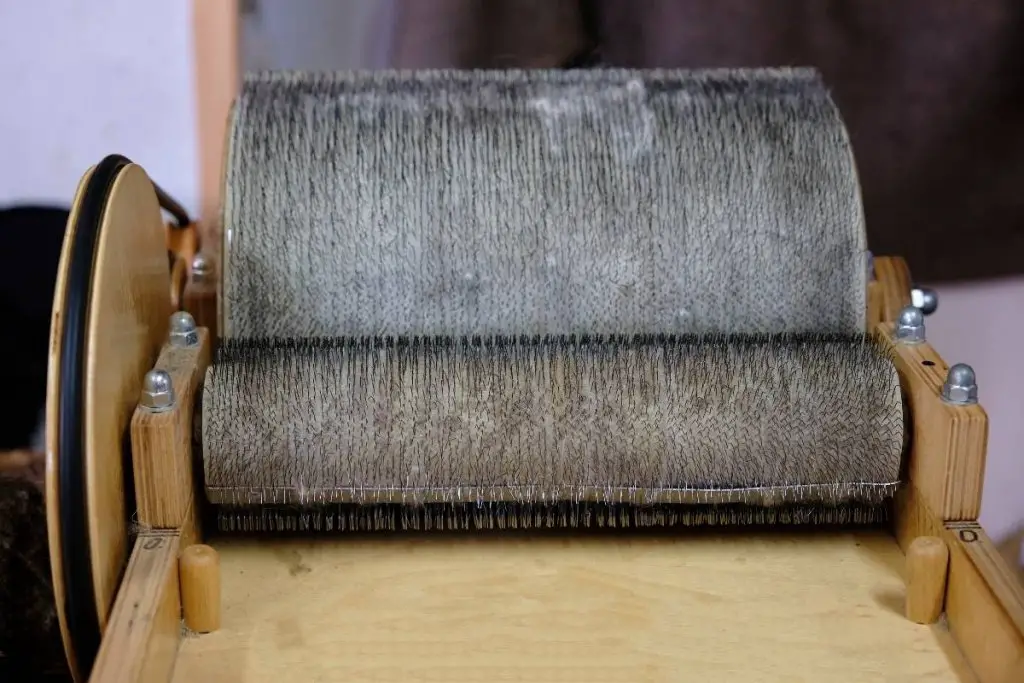A wool carder helps you process wool in your home or workshop. Wool carding untangles, cleans, and mixes wool fibers to produce a continuous web of fibers, which is then ready for spinning into thread or other materials.
Table of Contents
What is a Wool Carder?

A wool carder is a hair brush-like device that untangles and aligns raw wool fibers so they can be processed into materials like clothing. Tabletop wool carders, also known as drum carders, are machines that allow you to do this process even faster.
Wool carders allow you to:
- Create wool fibers from raw fleece
- Blend different types of wool fibers
- Fix partially-felted wool fibers
- Blend differently-colored wool fibers
- Smoothen and straighten wool locks
Wool carders are must-have tools for those who love working with wool and preparing crafts and woolen garments. Those who frequently use wool carders include:
- Fiber artists
- Hand spinners
- Wool hobbyists
- Fiber enthusiasts
- Textile artisans
Using a wool carder

Wool carders are simple to use:
- Select a clump of clean, dried sheep fleece.
- Place a thin wool layer on the teeth of one carder and cover it with the other carder. You can lay the bottom carder on your lap for stability.
- Brush the upper carder gently over the bottom one in a sweeping motion. You should work from top to bottom in full strokes and in one direction. This process will transfer wool fibers from the bottom carder to the upper one.
- Repeat the process after transferring the empty carder to your right hand. Brush the empty carder over the one containing the wool fibers as you untangle and straighten the fibers.
- Keep switching the carders and repeating the brushing process until the wool appears smooth and the fibers aligned in one direction.
- Nudge the empty carder over the other carder as you push the wool fibers to the carder’s edge.
- Remove the smooth wool fibers from the carders for further processing.
Wool Carders vs Wool Combers
Wool combers are handheld tools comprising two rows of long, thin metal teeth (or tines). Like wool carders, combers also work in pairs. However, a wool comber produces finer, more lustrous wool than a wool carder.
Below are typical differences between wool carders and wool combers:
- A wool carder only cards cleaned fleece, while you can use a wool comb on uncleaned wool.
- Wool combs produce top or smooth worsted yarn. Handheld wool cards produce puffy, interlaced wool fibers.
- Wool combs organize wool into short and long parallel fibers.
- Yarn from wool combing is smooth and lustrous. Yarn from carding is lightweight and airy.
Types of Wool Carders
There are two main types of wool carders: handheld and tabletop wool carders.
Handheld Wool Carder
Hand carders are portable carding tools made of wooden boards with wire teeth.
Handheld carders work in pairs and are suitable for preparing small wool batches for spinning. You can use handheld carders to blend different kinds of fibers for a customized blend of fibers.
Hand carders from reputable brands like Ashford and Strauch are available at their physical and online stores.
Tabletop Wool Carder (Drum Carder)

A tabletop wool carder, also referred to as a drum carder, is a machine that allows you to card wool much faster than you can with a handheld wool carder.
Drum carders are ideal for processing large batches of wool. A drum carder is made up of cylindrical drums with sharp needles sticking out of them. Wool is raked through the needles to detangle it.
A drum carder works by raking through raw wool, straightening, and untangling it to produce uniform wool fibers.
Here’s how a drum carder works:
- The feed tray receives raw fleece.
- The rakes on the smaller drum ‘grasp’ the wool fibers as you turn the handle of your drum carder.
- The smaller drum transfers the wool fibers to the larger drum, which straightens and sorts the wool fibers.
- The larger drum has a doffing strip with a groove. This is where you insert your doffing pin to lift out the straightened wool batt.
Which is Better: Handheld or Tabletop Carders?
Tabletop carders are perfect when you want to quickly process large batches of wool. A handheld carder may be right for you if you’re a novice spinner or crafter looking to polish your skills.
When considering whether a tabletop carder or handheld carder is suitable for you, your level of expertise is usually the most critical question.
Other considerations include:
- Your budget
- The type of project you want to take
- The kind of fiber you’re working with
- Your processing quantity

